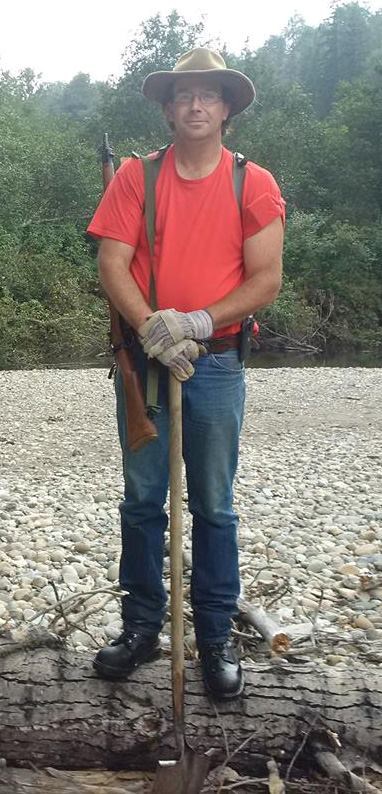A Mackenzie-based developer of small-scale mines fears a new method for calculating the cost of reclaiming a site will drive him and other "mom and pop" operations out of business.
For years, developers put up a bond amounting to $5,000 per hectare but beginning in 2017, the Ministry of Energy, Mines and Petroleum Resources began to implement a process purported to provide a more accurate assessment of returning a site to its original condition.
The so-called reclamation bond calculator sets out the per-unit rate for the various types of work - be it removing debris, deactivating a road or planting trees - while a ministry inspector determines how much effort is needed.
Long leery of the new approach, it all became too much for Mitch Mortensen when recently told one of his clients would have to put up a bond worth $216,997 before he could work a one-hectare portion of a claim in the Manson Creek area north of Fort St. James.

Bonds that size will simply kill the industry, according to Mortensen, who runs Snowshoe Mountain Resources Corp., a private junior exploration and development company.
"If this is allowed to stand, I'm wiped out," he said.
Rick Wittner, president of the Quesnel-based Cariboo Mining Association, said the new approach was developed in response to the Mount Polley disaster.
"They took a look at the bonds that they had at Mount Polley and they'd seen that they were 20 or 30 years old and there wasn't enough money there to cover it, just in case Imperial Metals decided to walk away from it," Wittner said.
"There was an Auditor General's report done and they felt that the bonding right across the board wasn't sufficient and it didn't matter if it was placer, sand and gravel, mineral exploration or the big open pit mines, so they've come up with this bond calculator."
However, a Ministry of Energy, Mines and Petroleum Resources spokesperson said Mount Polley was not the reason. Rather, it was developed simply as a way to provide a "fair and consistent means of assessing reclamation liability" and to ensure the provincial government "collects adequate security to cover the best estimate of reclamation costs."
Wittner said the outcomes tend to be "a little on the heavy side," particularly for placer miners who've been working their claims for decades while maintaining clean records over that time.
While he called the amount Mortenson's client is facing "quite horrendous," Wittner also suggested a project's remote location is a big reason.
"When they do the bond calculation, they actually factor in what it would cost to travel all the way into the location and haul out the equipment that they've got there, the trailers that they've got there, in case they went broke and then of course to go back in and fill in the mining that they've done," Wittner said.
He said it also depends on how deep a miner will have to dig to hit pay dirt.
While most of the claims in the Central Interior are worked by small "mom and pop" ventures, the big placer mines are found up in Atlin. They must go down anywhere from 75 to 125 feet but the yields can be phenomenal.
"I heard, two years ago, one of them did something like $37 million in recovery," Wittner said.
He said claim holders who can't come up with the cash can try to get irrevocable letters of credit from their banks or turn to an insurance company or a bonding company but need to provide collateral.
"They won't accept our equipment, you usually have to put your home on the line," Wittner said.
One of the big sticking points for Mortensen is the cost of digging nine test pits, each 30 metres wide by 30 metres long by by 10 metres deep. The calculator put the cost at $76,950 to reclaim those portions but Mortensen asserted it could be done for about $20,000.
A proponent can work with the ministry to reduce the amount.
Options, according the ministry spokesperson, can include reducing the size of the mine, providing a phased plan, committing to a detailed progressive reclamation plan and providing additional and more detailed information in regards to the mine plan.



